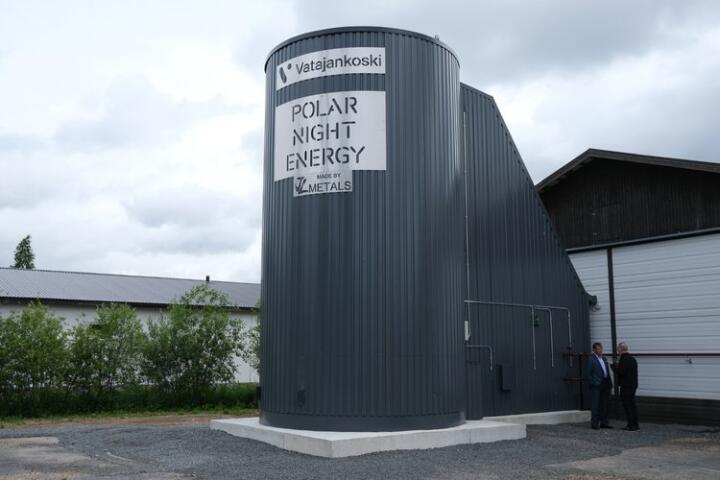
Hot sand for hot winters
Storing renewable energies is THE key challenge to a successful energy transition because wind and solar power produce plenty of electricity, albeit not necessarily at the time it’s needed. As long as the sun shines in the summer households require relatively little energy. The situation is different during the cold months of the year when consumers turn on their heaters. Consequently, the green energy transition will require massive amounts of storage systems in order to provide the surplus energy from the summer in winter. Researchers in Finland have developed a particularly simple and sustainable method.
Heat is stored for months in sand silos
In Kankaanpää, Finland, the clean-tech startup Polar Night Energy for the first time in 2022 caused a sensation with an energy battery using sand. The principle was equally simple and ingenious: The two young entrepreneurs behind the business use surplus electricity from solar and wind power systems to heat sand in a well-insulated steel tank four meters (13 feet) wide and seven meters (23 feet) high. According to “Polar Night Energy,” the sand is heated to a temperature of about 500 to 600 °C (930–1,100 °F) by means of a heat exchanger buried in the middle of the tank. Up to eight megawatt hours (MWh) can be generated in this way for the low-sunlight winter months – with a nominal capacity rating of 100 kW. For comparison, an average three-person household consumes around 3.5 MWh per year. The company mentions an efficiency factor of up to 99 percent and the capacity to store heat with minimal loss for months on end.
“As a material, as well as being inexpensive, sand is durable and can store a lot of heat in a small volume at a temperature of about 500–600 degrees Celsius.”
Markku Ylönen, CTO of “Polar Night Energy”

The sand battery is located on the premises of a local district heating plant from where the heat stored in it is fed into the district heat network supplying surrounding private buildings and public facilities such as offices and swimming pools. However, the obvious idea of converting heat back into electricity does not work with equal efficiency. According to the company, the design is suitable exclusively for thermal energy storage, but that’s of significant value in cold Finland, where 25 percent of the energy consumed serves to heat buildings.
“It’s really easy to convert electricity into heat,” says Markku Ylönen, one of the founders of “Polar Night Energy,” but going back from heat to electricity, that’s where you need turbines and more complex things. As long as we’re just using the heat, it really stays simple.”
Further development using soapstone as a thermal battery
At the end of 2024, in the Finnish town of Pornainen, Polar Night Energy started constructing another even larger silo using crushed soapstone instead of sand as a thermal storage material. Soapstone is a traditional Finnish raw material that in this case is a by-product generated by the production of chimneys. Some 2,000 metric tons (2,200 short tons) of it were used to fill a battery – equating to some 40 truckloads.
The evolution of the sand battery – or more precisely, the soapstone battery – has a capacity of 1 megawatt and can store up to 100 megawatt hours of heat. In the future, it is supposed to support the central heating system for Pornainen’s population of some 5,000 people. Initial tests in the winter were successful.
In parallel, Polar Night Energy is planning another pilot plant that’s to test whether a sand battery couldn’t efficiently produce electricity as well – in other words, if the stored heat can be converted into electric power. Construction of this testing plant is scheduled to start soon and the tests are to be run until the end of 2026. Polar Night Energy’s aim is to build commercial sand battery powerplants based on the findings from the pilot project that can make an important contribution to the energy transition effort.
Energy storage from the laboratory
Same objective, different approach: Research scientists at TU Vienna also asked themselves how heat of any kind – including heat generated in industrial processes – can be used at a later point in time. The scientists have recently obtained a patent for a method of converting boric acid into oily and high-energy boron oxide by applying heat inside a reactor. The process releases water. When water is added again to the boron acid, which can be stored for months in tanks, the chemical reaction is reversed and the chemically stored thermal energy (70–200 °C/158 to 392 °F) is released again.

Laboratory tests have demonstrated that this process cycle can be repeated several times. In the next step, the Viennese researchers are planning to team up with partners from industry to find out how the reactor technology can be scaled up to industrial levels – and the summer heat can truly heat the winter.




